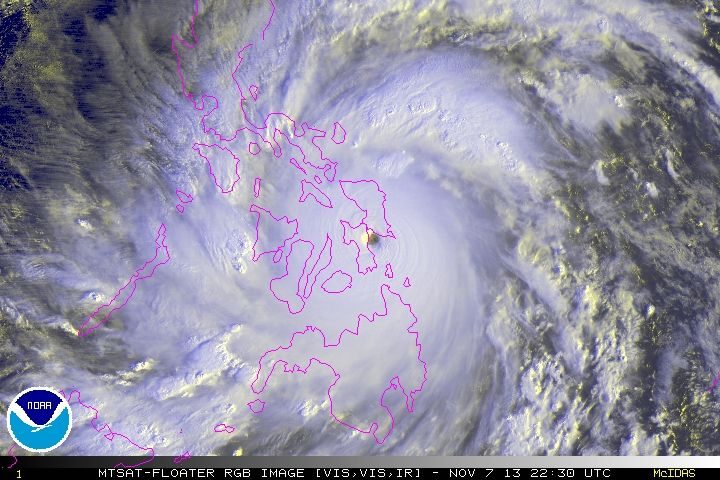SUMMARY
This is AI generated summarization, which may have errors. For context, always refer to the full article.

MANILA, Philippines – The northwest Pacific region, the area that includes East and Southeast Asia, has been seeing stronger typhoons making landfall in the past 4 decades, scientists found out.
“Typhoons that strike East and Southeast Asia have intensified by 12-15%,” a study published by Nature Geoscience showed Monday, September 5.
The researchers used information from the US Navy’s Joint Typhoon Warning Center (JTWC) and the Japan Meteorological Agency (JMA) from 1977 to 2014. They found out that from less than 5 a year, storms that fall under Category 4 and 5 of the Saffir-Siimpson Scale have increased to an average of 7 annually.
A Category 4 storm has maximum sustained winds of 209-251 kilometers per hour, while storms with winds above 252 km/h are classified as Category 5. 2013’s Super Typhoon Yolanda (Haiyan), one of recorded history’s strongest typhoons, is a Category 5.
For typhoons that strike East Asia (eastern mainland China, Taiwan, Korea, Japan), Category 4-5 storms have gone up from less than one a year to more than 4 per year since the 1970s.
Meanwhile, typhoons that head toward Southeast Asia (primarily the Philippines, Vietnam, and/or south China), Category 4-5 typhoons have doubled in the same period, the study showed.
The study said that the storms that make landfall are becoming more intense compared to those that stay in the open ocean.
This, according to scientists Wei Mei and Shang-Ping Xie from the University of North Carolina at Chapel Hill, can be attributed to warmer waters near the coasts compared to out at the open sea.
Warmer coastal seas are contributing to the storms’ faster intensification, which is also making these typhoons stronger by the time these hit land.
However, the authors said that “it remains to be determined whether the 38-year trend we identified here is part of low-frequency oscillations or secular climate change.”
With this trend – and the expected warmer ocean temperatures seen in the coming years – the authors raised concern over the “heightened threat to people and properties in the region.” – Rappler.com
Add a comment
How does this make you feel?
![[ANALYSIS] A new advocacy in race to financial literacy](https://www.rappler.com/tachyon/2024/04/advocacy-race-financial-literacy-April-19-2024.jpg?resize=257%2C257&crop_strategy=attention)


![[In This Economy] Can the PH become an upper-middle income country within this lifetime?](https://www.rappler.com/tachyon/2024/04/tl-ph-upper-income-country-04052024.jpg?resize=257%2C257&crop=295px%2C0px%2C720px%2C720px)

There are no comments yet. Add your comment to start the conversation.